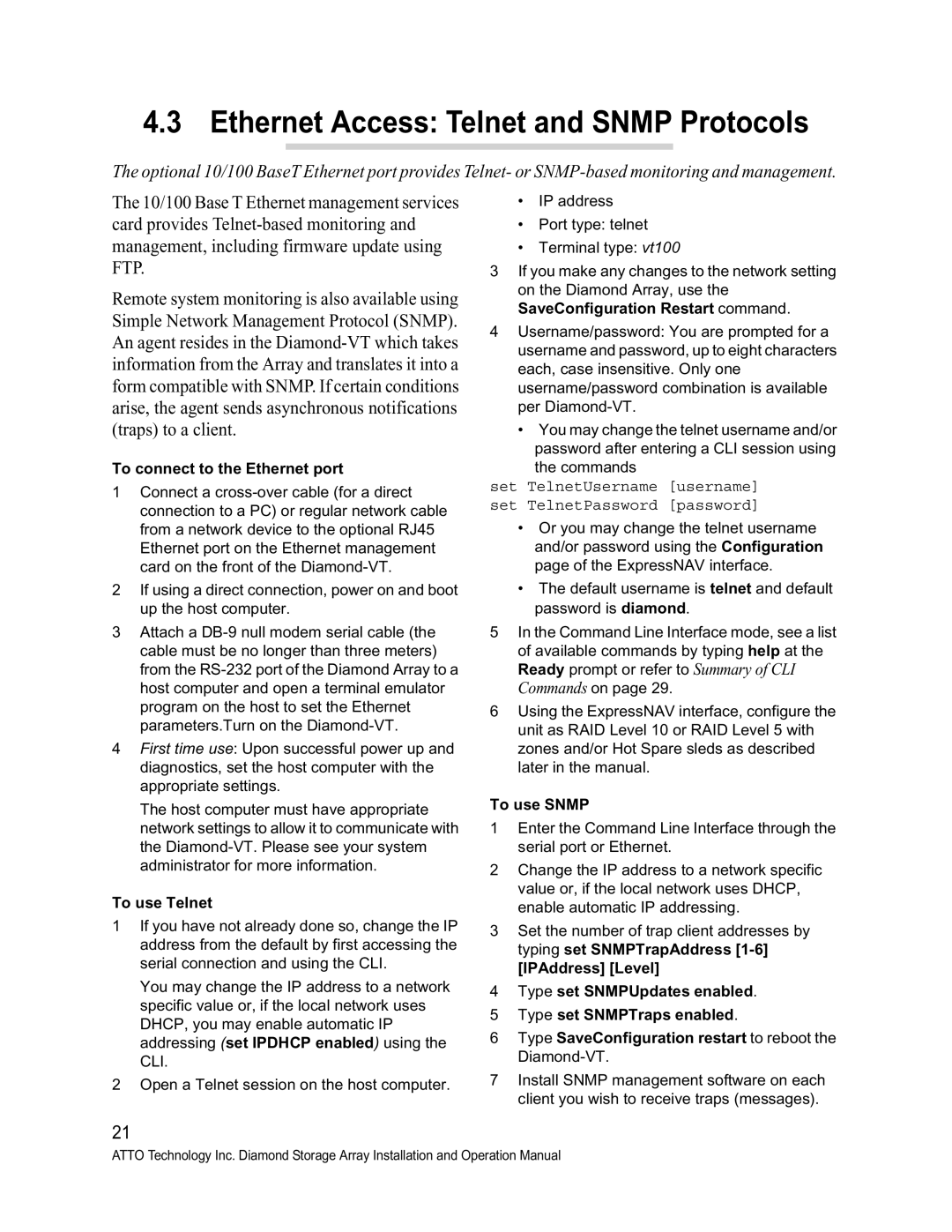4.3 Ethernet Access: Telnet and SNMP Protocols
The optional 10/100 BaseT Ethernet port provides Telnet- or
The 10/100 Base T Ethernet management services card provides
Remote system monitoring is also available using Simple Network Management Protocol (SNMP). An agent resides in the
To connect to the Ethernet port
1Connect a
2If using a direct connection, power on and boot up the host computer.
3Attach a
4First time use: Upon successful power up and diagnostics, set the host computer with the appropriate settings.
The host computer must have appropriate network settings to allow it to communicate with the
To use Telnet
1If you have not already done so, change the IP address from the default by first accessing the serial connection and using the CLI.
You may change the IP address to a network specific value or, if the local network uses DHCP, you may enable automatic IP addressing (set IPDHCP enabled) using the CLI.
2Open a Telnet session on the host computer.
•IP address
•Port type: telnet
•Terminal type: vt100
3If you make any changes to the network setting on the Diamond Array, use the SaveConfiguration Restart command.
4Username/password: You are prompted for a username and password, up to eight characters each, case insensitive. Only one username/password combination is available per
• You may change the telnet username and/or
password after entering a CLI session using the commands
set TelnetUsername [username] set TelnetPassword [password]
•Or you may change the telnet username and/or password using the Configuration page of the ExpressNAV interface.
•The default username is telnet and default password is diamond.
5In the Command Line Interface mode, see a list of available commands by typing help at the Ready prompt or refer to Summary of CLI Commands on page 29.
6Using the ExpressNAV interface, configure the unit as RAID Level 10 or RAID Level 5 with zones and/or Hot Spare sleds as described later in the manual.
To use SNMP
1Enter the Command Line Interface through the serial port or Ethernet.
2Change the IP address to a network specific value or, if the local network uses DHCP, enable automatic IP addressing.
3Set the number of trap client addresses by typing set SNMPTrapAddress
4Type set SNMPUpdates enabled.
5Type set SNMPTraps enabled.
6Type SaveConfiguration restart to reboot the
7Install SNMP management software on each client you wish to receive traps (messages).
21
ATTO Technology Inc. Diamond Storage Array Installation and Operation Manual
